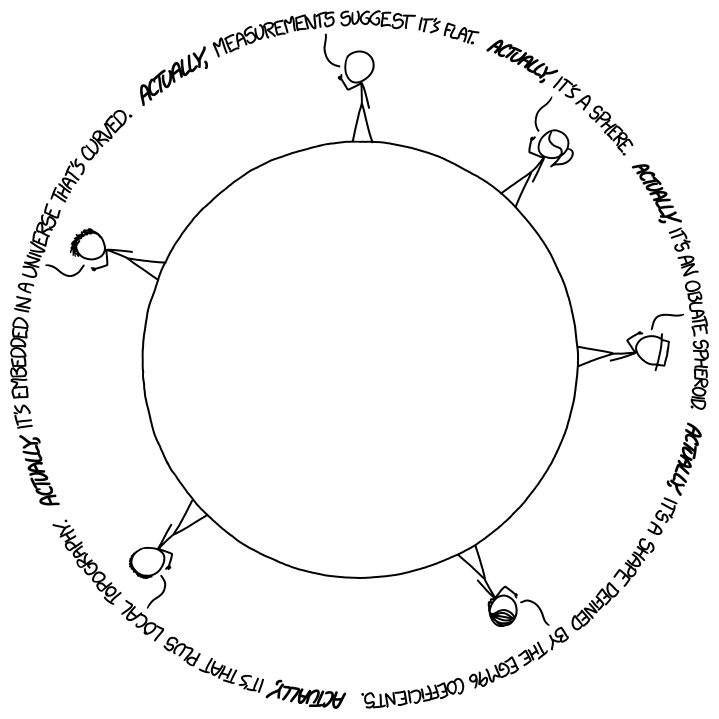Iain Kirkpatrick produced a Wellington Public Transport geovisualization inspired by Richard Law's previous viz. The geoviz uses GitHub. Iain is also a PGDipGIS graduate.
A space for discussions and research in the area of Geographic Information Science and Technology (GIST).
Monday 31 March 2014
Sunday 30 March 2014
New Zealand ESRI User Group Regional Meetings
Its the ESRI user group regional meeting season - if you're interested in attending any one of the local user group meetings - info is available here: http://www.gisuser.org.nz/events-amp-conferences/regional-meetings-amp-events/regional-meetings
Palmerston North is on this week (3 April) - I'll be making a guest appearance talking about the Geospatial Skills Shortage survey I ran in New Zealand a little while ago. Wellington is up on the 11th of April and I'll be presenting on SET (a spatial econometric transport model developed with the ISCR).
Palmerston North is on this week (3 April) - I'll be making a guest appearance talking about the Geospatial Skills Shortage survey I ran in New Zealand a little while ago. Wellington is up on the 11th of April and I'll be presenting on SET (a spatial econometric transport model developed with the ISCR).
40 Maps They Didn’t Teach You In School
Some nice cartographic topics (though some of the cartographic techniques could be better!).
Thursday 27 March 2014
Use of crowdsourcing to map Christchurch's flooding
Niwa used publicly submitted photographs of the flood waters in Christchurch to map the extent of the recent flood.
Wednesday 26 March 2014
Timelapse: Landsat imagery over time
Great website showing the changes in land use as captured by the LandSat satellites over time. They've set up some great examples - but of New Zealand interest is the changing rural land uses to wine (try Marlborough) and the changing land use in the Canterbury plains (not sure if this is a seasonal issue or the wider availability of irrigation).
http://world.time.com/timelapse/
Tuesday 25 March 2014
A little bit old but...
What are the implications of leaving a country off an international map for an international initiative? In this instance the missing case of New Zealand on the Nuclear Security Summit.
Women in GIS
A new ESRI story map which shows the location of women working in and studying GIS. Very US centric at the moment but an interesting insight into the spatial distribution of GIS positions internationally as well as the distribution of women in GIS.
http://storymaps.esri.com/stories/2014/womeningis/
Wednesday 19 March 2014
Google for the wrist...
What is this likely to mean for location based services? Toy stores nearby is mentioned in the video - but if you account for the potential to do heart monitoring and pedometer or similar body monitoring, there's massive potential for LBS to be individually aware. Yet another layer of info to mine from.
Tuesday 18 March 2014
Map of vaccine-preventable disease outbreaks
An interactive map which visually plots global outbreaks of measles, mumps, whooping cough, polio, rubella, and other diseases that are easily preventable by inexpensive and effective vaccines.
Global Health Program at the Council for Foreign Relations
Monday 17 March 2014
Sunday 16 March 2014
Parallel processing in python
Info on parallel processing in Python - good potential for GIS users!
Friday 14 March 2014
GED Seminar Series: Fan-deltas of the Western Coromandel Peninsula: an integrated study of fluvial dynamics, delta building and marine deposition
Thursday 20th
March, 4-5pm
Cotton
Seminar Room 304, Kelburn Campus
Victoria University of Wellington
speaker:
Dr Jon Tunnicliffe
School of
Environment, University of Auckland
Residential development and
recreational use along the western coast of the Coromandel Peninsula is largely
concentrated upon six major coarse-grained fan-deltas. These landforms preserve
a record of long-term adjustments amongst fluvial sedimentation from floods and
debris flows, long-shore and cross-shore coastal processes, and sea-level
fluctuations throughout the Holocene. We have employed a combination of
geophysical sounding, sediment tracing, and sonic drilling to develop a
chronology and stratigraphic record of adjustment and changes in river
base-level over the last 10,000 years. The record is consistent with earlier
studies of the Firth, most notably the chronology developed on the chenier
plain of the western coast. The record clearly reveals the timing of major
geomorphic events, including the onset of marine sedimentation following sea
incursion of the Firth at roughly 6,500 years BP. The semi-enclosed Firth
effectively provides a ‘sink’ term for a Holocene fluvial-coastal sediment
budget, and a reasonable proxy for long-term sediment yield from these rivers.
In this talk, we consider the
‘sediment delivery problem’ – how to leverage long-term records of
sedimentation such as this one to develop a sediment budget that takes explicit
account of sediment storage, abrasion, and changes in system configuration,
within the fluvial and coastal systems. Records such as these are important for
calibrating our models of sediment delivery, and for providing guidance to
managers and engineers who are working to minimize risk in these important and
sensitive coastal environments.
Thursday 13 March 2014
Monday 10 March 2014
Introducing a Property Tax in Ireland - how the Irish Revenue are using GI
The Irish Revenue are using Google and Street View to check whether homes are undervalued for a new Property Tax. Property tax is just being introduced in Ireland and is currently self assessed (see: http://en.wikipedia.org/wiki/Local_property_tax_(Ireland)). Geographic Information is playing a key (if somewhat Big Brother role) in checking this self assessment.
Sunday 9 March 2014
Mapping Wellington Public Transport
Check out: https://vimeo.com/album/2763946
Richard Law, MGIS student, has created a neat visualization of Wellington's Public Transport network for different days. Richard uses Google Transit Data Feed to nab the data and some code to automatically generate the different geovisualizations. Keep an eye on his Vimeo channel to see updated geoviz.
Subscribe to:
Posts (Atom)





